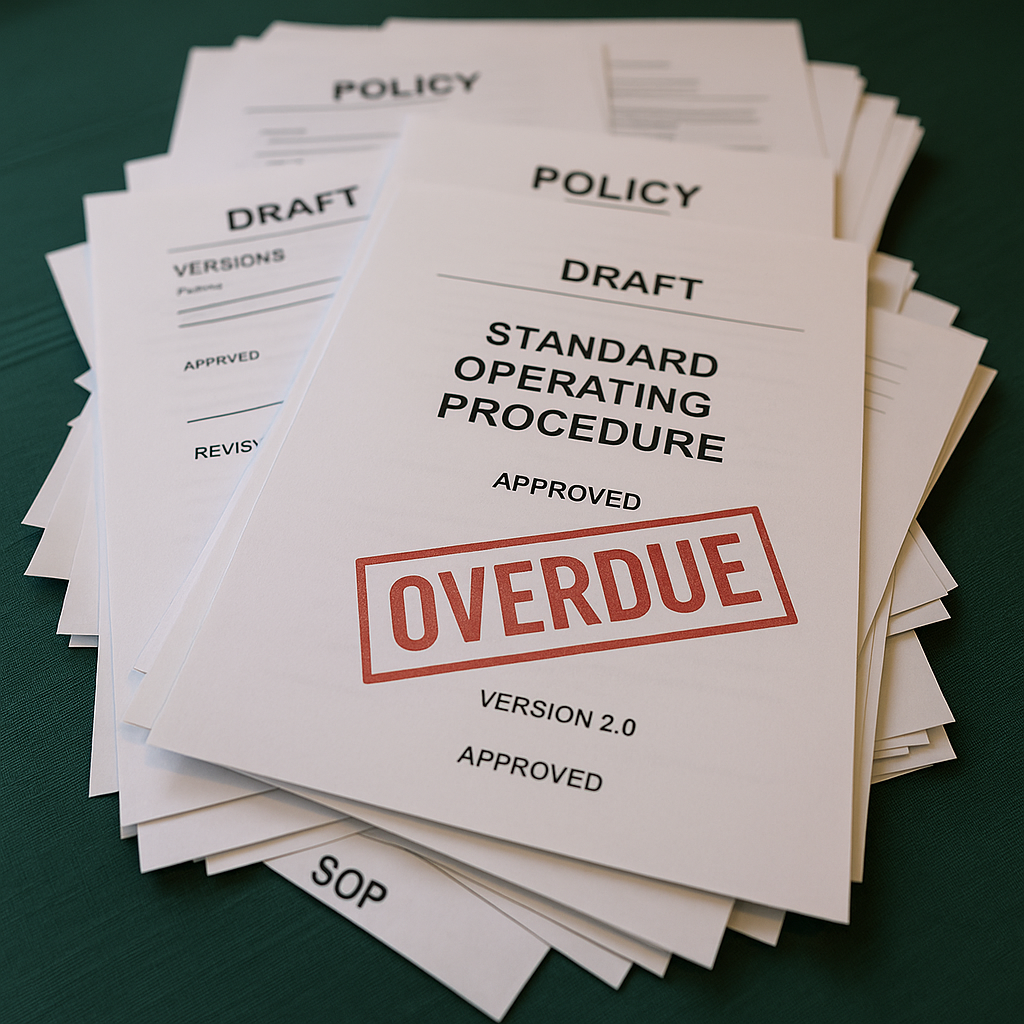Beyond the Blank Page:
How AI Gives Organizations a Head Start on Critical Documentation
For decades, organizations have wrestled with a common reality:
Good documentation — whether technical, operational, or functional — is essential, but it’s time-consuming, expensive, and often deprioritized when teams are under pressure.
The result?
Disaster recovery plans get outdated. Knowledge articles drift away from current processes. SOPs and training materials fall behind system updates.
Critical information that should empower teams ends up locked away in documents few can find, fewer can trust, and almost no one maintains.
It’s not because leaders don’t recognize the importance of documentation — it's because traditional methods of maintaining it are simply too resource-heavy to keep pace with the speed of change.
Today, however, AI is beginning to shift this balance in a meaningful way.
A New Era of Documentation Support
AI, when thoughtfully applied, isn’t about replacing subject matter expertise.
It’s about giving teams a head start — providing structure, momentum, and ongoing support to documentation efforts that might otherwise stall.
Instead of starting from a blank page, AI can generate draft templates for disaster recovery policies, Internet usage policies, acceptable use agreements, technical design documents, job aids, and even regulatory compliance documentation — standard frameworks that every organization needs but few have time to build from scratch.
More importantly, AI tools can help teams evolve and maintain this documentation over time, suggesting updates when systems change, helping summarize complex system upgrades, and identifying gaps between written policies and real-world operations.
The goal isn't automation for its own sake — it’s augmentation, reducing the manual burden while elevating the quality, consistency, and accessibility of critical documentation.
Why This Matters More Than Ever
Research from McKinsey & Company suggests that knowledge workers can spend up to 20% of their time simply searching for and recreating information that already exists elsewhere.
(SOURCE - McKinsey: https://www.mckinsey.com/business-functions/mckinsey-digital/our-insights/the-social-economy)
In the realm of technical documentation, the costs are even steeper:
According to a study by IDC, companies lose an estimated $14,000 per employee per year due to inefficiencies related to document management and information retrieval.
(SOURCE - IDC: https://www.idc.com/getdoc.jsp?containerId=prUS22818312 )
Organizations invest heavily in enterprise systems, cloud platforms, and data infrastructure — but if the processes and policies around them aren't well-documented, the human side of technology breaks down.
Projects slow. Compliance risks rise. Institutional knowledge leaks away.
In today's landscape of rapid change, where talent turnover and system updates are constant realities, maintaining living, accessible, and high-quality documentation isn’t a luxury — it’s a strategic necessity.
Early Success Stories
Some forward-thinking companies are already seeing the benefits.
Accenture has publicly discussed leveraging AI to accelerate the creation of internal process documentation, estimating a 30% improvement in documentation turnaround time for client-facing and internal resources.
(SOURCE - Accenture: https://newsroom.accenture.com/news/accenture-announces-new-generative-ai-centers-of-excellence.htm l)ServiceNow integrated AI-powered knowledge management into its platform, reporting that organizations using AI-generated knowledge articles saw user self-service rates improve by 35%, reducing help desk costs and response times.
(SOURCE - ServiceNow: https://www.servicenow.com/products/itsm/what-is-knowledge-management.html)These aren’t isolated examples — they demonstrate that AI can measurably improve both the creation and the utilization of documentation, making it a catalyst for better service delivery, better project outcomes, and better business resilience.
Practical Applications
AI is already helping accelerate the creation and maintenance of:
Technical design documents
Network architecture diagrams
Disaster Recovery (DR) policies
Internet usage and cybersecurity policies
Standard Operating Procedures (SOPs)
Knowledge base articles and job aids
Business and technical requirements documents
Onboarding and training materials
Each of these areas benefits from starting strong with AI support — then applying expert review and organizational context to finalize and continuously improve them.
AI as an Enabler, Not a Replacement
No AI tool will ever fully replace the need for experienced leaders, technologists, and business professionals to guide documentation strategies.
But for those willing to rethink how documentation work begins —
AI offers an unprecedented opportunity to accelerate quality, consistency, and value.
Instead of reinventing the wheel every time, we can use AI to build the foundation faster — and spend more of our time driving meaningful, strategic work forward.
About the Author
Richard Joseph is a technology strategist and the founder of Tech Lens Advisors, a consultancy focused on aligning digital transformation with real-world business outcomes. With over 30 years of experience leading enterprise technology initiatives across ERP, CRM, supply chain, and analytics platforms, Richard helps organizations break through operational dysfunction by prioritizing strategy, process clarity, and change readiness. His mission is simple: Make technology work for people, not the other way around.

